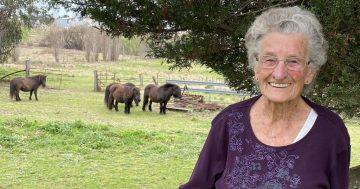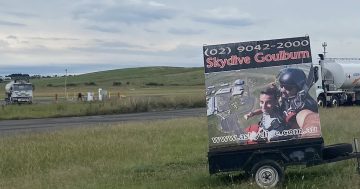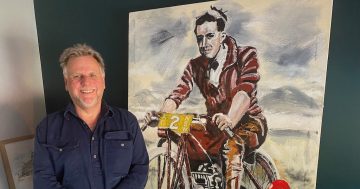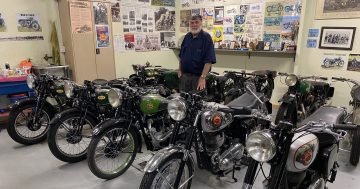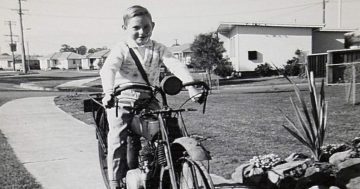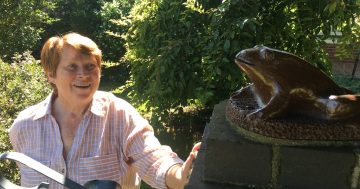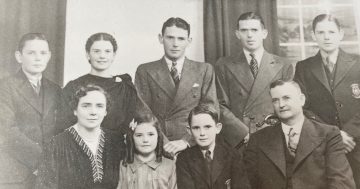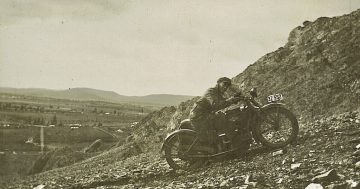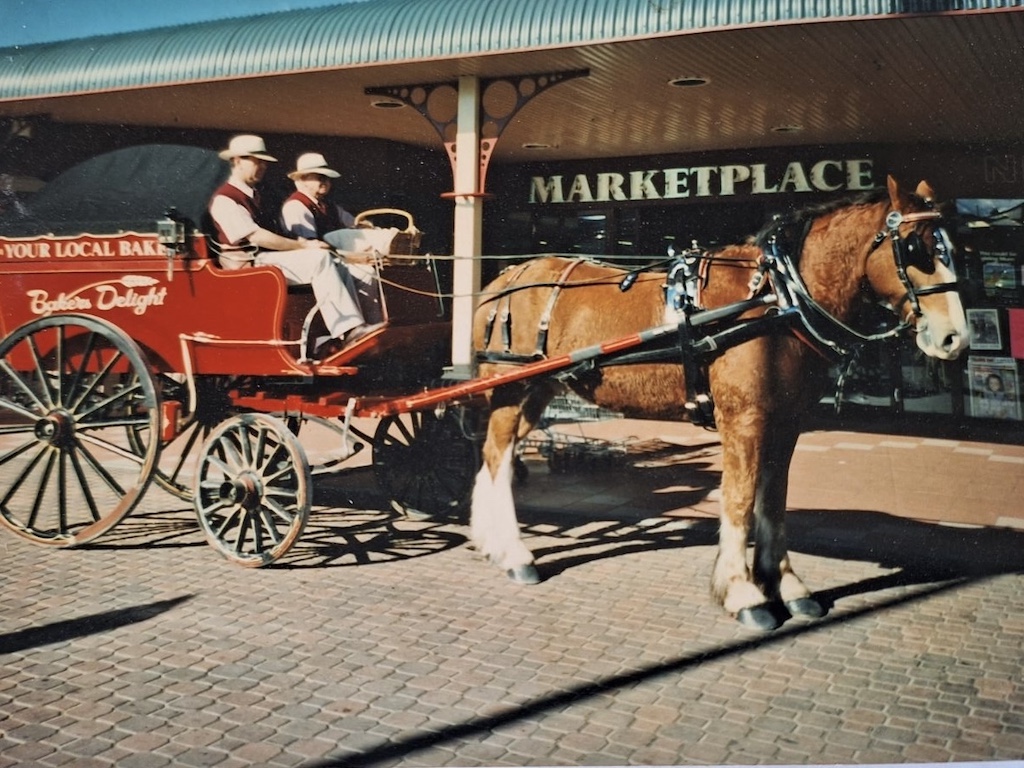
Toby and Leicester delivered Santa Claus to Christmas parties at Windellama, brides to weddings and pulled Bakers Delight carts through towns whenever a franchise opened, including at Camden and Newtown. Photo: Dewsbury collection.
Leicester Dewsbury jumped on his pony outside a bush school one early morning and took off for the hills to escape another caning from his angry teacher.
His grandson, also named Leicester, recounts the teacher at the little school at Springfield sheep station south of Goulburn, got on his horse and galloped off after him, but never caught him.
Leicester was better known by his second name, Norman. His father, John, worked at Springfield sheep station for 50 years. Young Norman was fed up with being caned for being late to school. He wasn’t going to put his hand out or bend over anymore.
Having proved his horsemanship at such a young age, he was sent to another big property near Goulburn, the Chisholm family’s Kippilaw, to get a job as a groom. Once there, a vet visiting from Sydney, John Stewart, saw how Norman expertly lifted an injured horse’s front leg to keep its hind leg down, and offered him a job in Sydney.
“He went to Randwick and got in with all the trainers like Bayly Payten; he was the Tommy Smith of the day … learned a lot from him and spent a lot of time with him and started training horses,” Leicester said.
After a stint in Goulburn training racehorses for the owners of big stations in the district, including Dr Rex Faithfull at Inveralochy and Colonel Rutledge at Gidleigh, Norman took his clients’ advice and returned to Sydney, where he established himself at Warwick Farm. He trained the 1944 winner of the Doncaster, ‘Goose Boy’ and winner of the first Queen’s Cup in 1952, ‘Salamanca’.
Horses have featured in the lives of generations of Dewsburys. John, who came to Australia in 1853, had worked with heavy horses hauling barges in the canals of England, as had his father.
The younger Leicester is now 72. Retired from work, he is building coaches at Quialigo, south of Goulburn, where he has a blacksmith’s forge. He learned from his father-in-law, Sid Lincoln, in 1969. That wasn’t easy.
“They guarded everything; they didn’t like to tell you too much. They had an old saying, ‘He’s probably a brain robber. If I teach him, he’ll do me out of work,’” Leicester said.
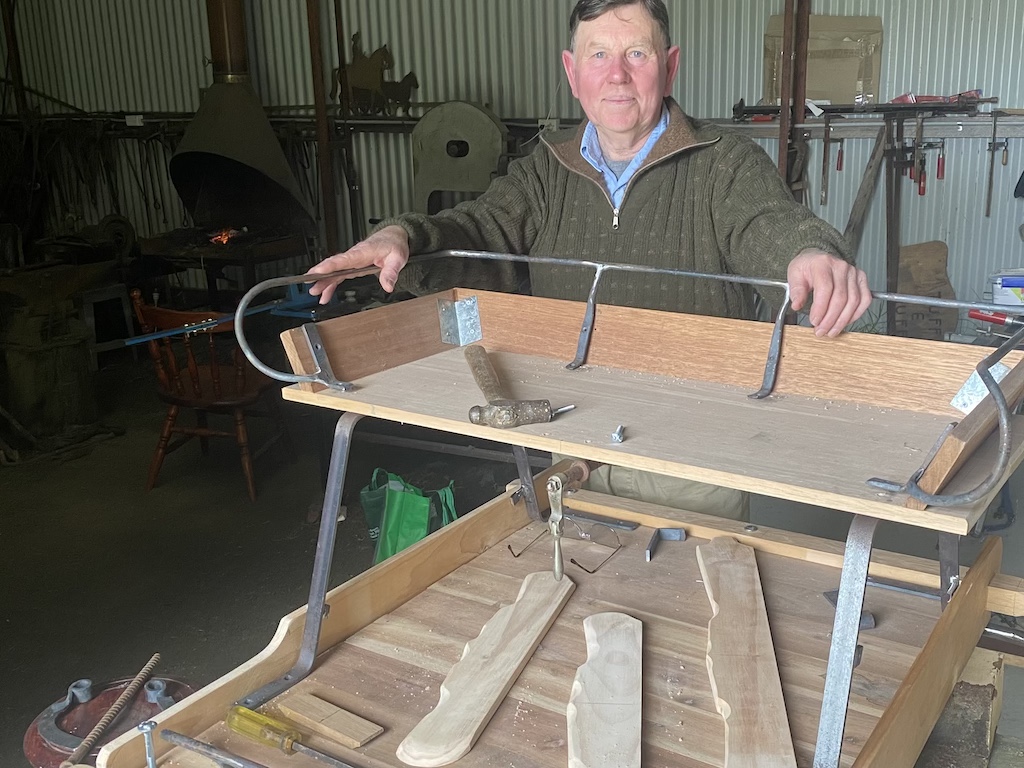
Leicester Dewsbury is making a new gig for Anne Lindh for the Royal Adelaide Show in September. He is shaping all the timber and steel for the vehicle, except for chrome railing. His forge is on the left. Wheelwright Mark Burton of Bungendore has made the wheels. Photo: John Thistleton.
He did no such thing. But he did pick up the skills, and later bought all of Sid’s equipment, which he is still using.
“I was more interested in coach building, which takes in woodwork and iron. I’ve made a lot of ironwork for different people with bread carts and milk carts and that sort of thing for the Sydney show,” Leicester said.
For 30 years he worked with ‘Toby’, a light delivery horse he bought from Harry Beard near Melbourne as a three-year-old. For the uninitiated, delivery horses are bred to pull trades vehicles like butcher’s and baker’s carts. A calm, well-mannered gelding untroubled in city traffic, Toby was out of a brumby mare and sired by a Clydesdale.
“He became my offsider; he knew me as well as I knew him,” Leicester said. “He was my best friend virtually,” Leicester said. They won countless blue ribbons for first place at the Sydney Show and broke in other horses working together.
Leicester’s father Reg worked at Warwick Farm for 30 years on the maintenance staff. Leicester was born at Paddington but grew up hankering for the bush.
“Any chance I got I was back at Springfield,” he said. “Any holidays (Springfield stud manager) Hughie McClelland would say, ‘It’s lamb marking time, you’d better come up’. Jim Maple-Brown would find me a job.”
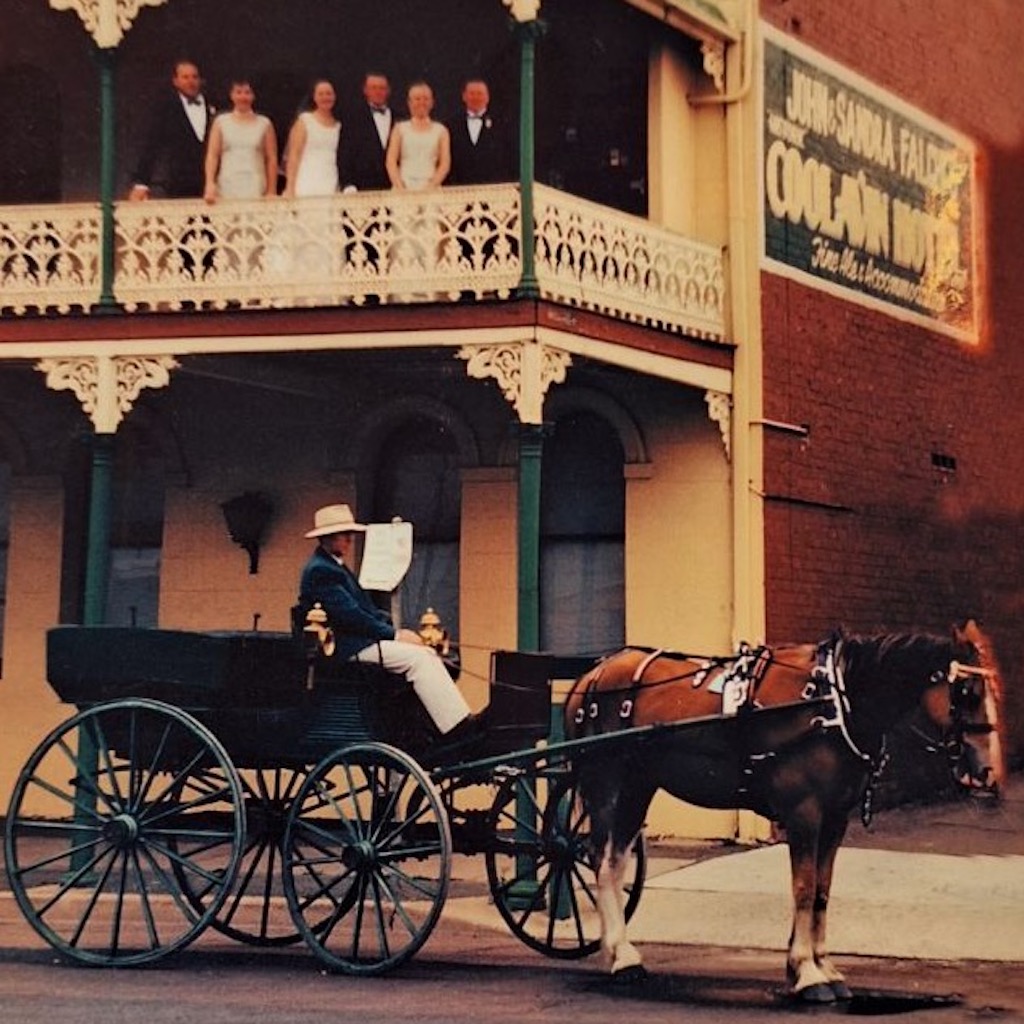
Toby and Leicester waiting for the bride; one of the many jobs they did around Goulburn as a team. Leicester also wrangled horses and dogs on movie and television sets, including on Pirates of the Caribbean movie, Dead Men Tell No Tales. Photo: Dewsbury collection.
Early in his life, Leicester said up to 20 or more people worked at Springfield, which provided accommodation for them and generations of their families. They called the owner ‘Mr Jim’ and his wife Pamela Maple-Brown ‘Mrs Jim’, a tradition that came from the Old Country.
Leicester inherited letters from his cousins Elvy McLelland to her sister Myra in Melbourne, including one marking a milestone: “The electricity has come to Springfield, you can see the lights of the tennis courts lit up,” Elvy wrote. “Mum said we will still stick to the candles and oil lights because this electricity could be dear.”
Elvy’s mother was right. And for Leicester, memories from back then have become even more valuable.
Original Article published by John Thistleton on About Regional.












